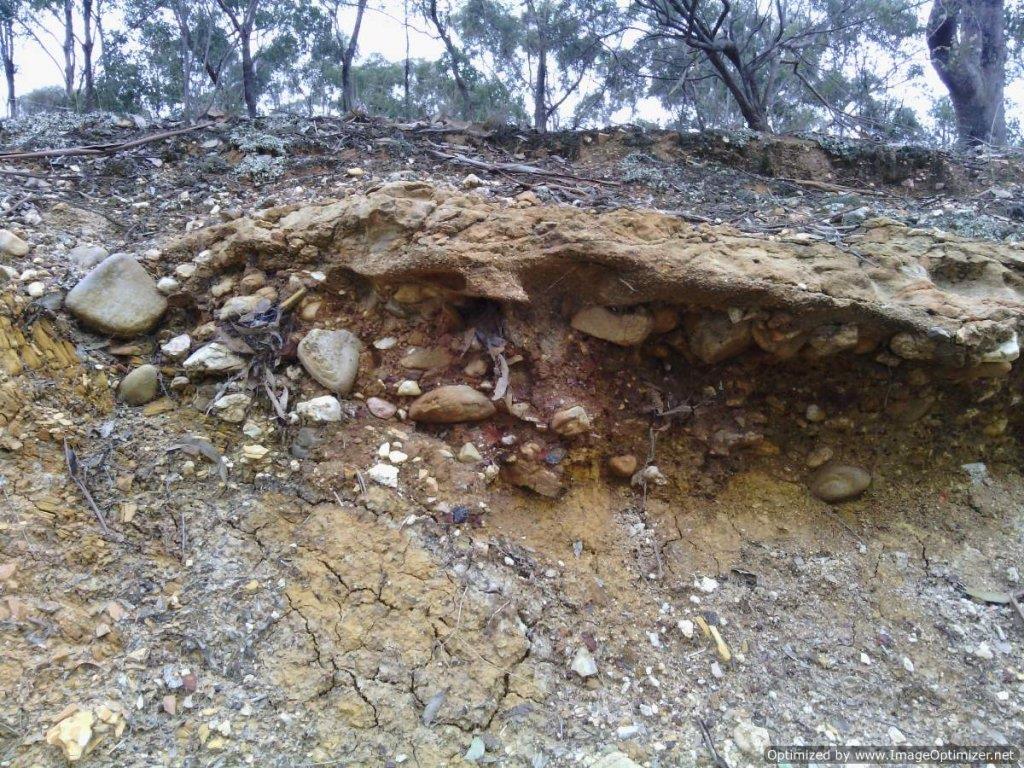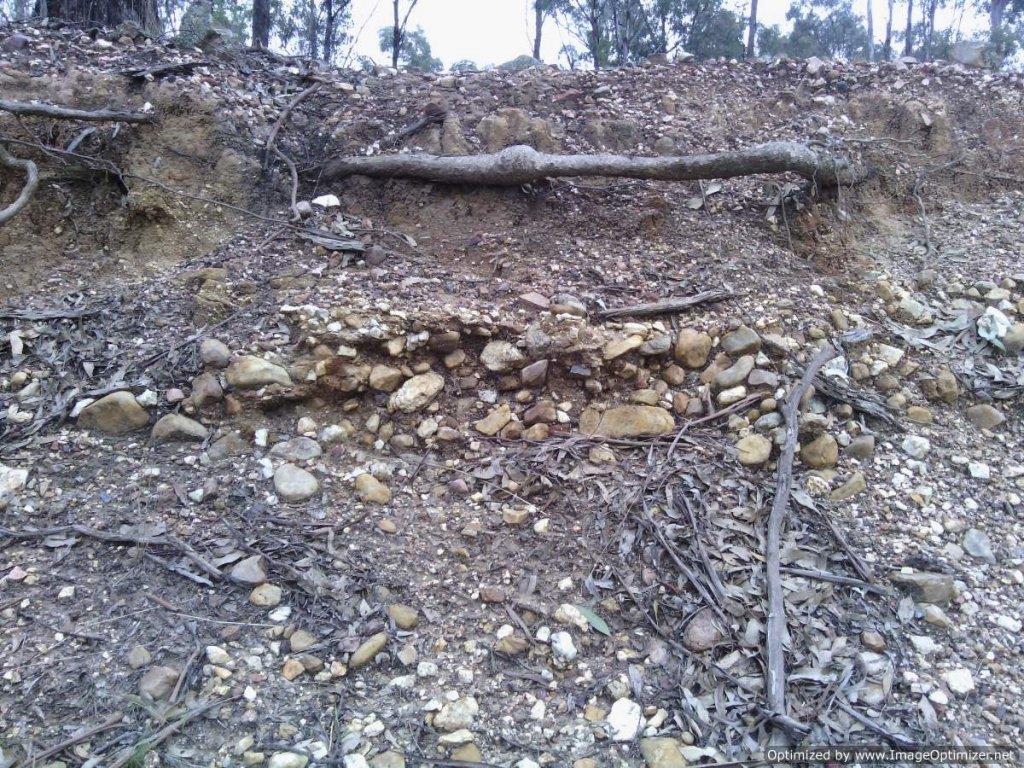For wet alluvial prospecting the appliances, besides pick and shovel, are puddling tub, tin dish, and cradle; the latter, a man handy with tools can easily make for himself.
In sinking, the digger should be careful to avoid making his shaft inconveniently small, and not to waste his energy by sinking a large "new chum" hole, which usually starts by being about three times too large for the requirements at the surface, but narrows in like a funnel at 10 feet or less. A shaft, say 4 feet by 2 feet 6 inches and sunk plumb, the ends being half rounded, is large enough for all requirements to a considerable depth, though I have seen smart men, when they were in a hurry to reach the drift, get down in a shaft even less in size.
The novice who is trying to follow or to find a deep lead must fully understand that the present bed of the surface river may not, in fact seldom does, indicate the ancient watercourses long since buried either by volcanic or diluvial action, which contain the rich auriferous deposits for which he is seeking; and much judgment and considerable underground exploration are often required to decide on the true course of leads. Only by a careful consideration of all the geological surroundings can an approximate idea be obtained from surface inspection alone; and the whole probable conditions which led to the present contour of the country must be carefully taken into account.
How am I to know the true bottom when I see it? asks the inexperienced digger. Well, nothing but long experience and intelligent observation will prevent mistakes at times, particularly in deep ground; but as a general rule, though it may sound paradoxical, you may know the bottom by the top.
That is, we will assume you are sinking in, say, 10 to 12 feet ground in a gully on the bank of which the country rock is exposed, and is, say, for instance, a clay slate or sandy slate set at a certain angle; then, in all probability, unless there be a distinct fault or change in the country rock between the slate outcrop and your shaft, the bottom will be a similar slate, standing at the same angle; and this will very probably be overlaid by a deposit of pipeclay, formed by the decomposition of the slates.
From the crevices of these slates, sometimes penetrating to a considerable distance, you may get gold, but it is useless attempting to sink through them. If the outcropping strata be a soft calcareous (limy) sandstone or soft felspathic rock, and that be also the true bottom, great care should be exercised or one is apt to sink through the bottom, which may be very loose and decomposed. I have known mistakes made in this way when many feet have been sunk, and driven through what was actually bed rock, though so soft as to deceive even men of experience. The formation, however, must be the guide, and except in some specially difficult cases, a man can soon tell when he is really on bed rock or "bottom."
On an alluvial lead the object of every one is to "get on the gutter," that is, to reach the lowest part of the old underground watercourse, through which for centuries the gold may have been accretionising from the percolation of the mineral-impregnated water; or, when derived from reefs or broken down leaders, the flow of water has acted as a natural sluice wherein the gold is therefore most thickly collected. Sometimes the lead runs for miles and is of considerable width, at others it is irregular, and the gold-bearing "gutter" small and hard to find. In many instances, for reasons not readily apparent, the best gold is not found exactly at the lowest portion of these narrow gutters, but a little way up the sides. This fact should be taken into consideration in prospecting new ground, for many times a claim has been deserted after cleaning up the "bottom," and another man has got far better gold considerably higher up on the sides of the gutter. For shallow alluvial deposits, where a man quickly works out his 30 by 30 feet claim, it may be cheaper at times to "paddock" the whole ground-- that is, take all away from surface to bottom, but if he is in wet ground and he has to drive, great care should be taken to properly secure the roof by means of timber. How this may best be done the local circumstances only can decide.
In summary gold nuggets like plums in Christmas pudding were found in or stuck on white pipe clay





